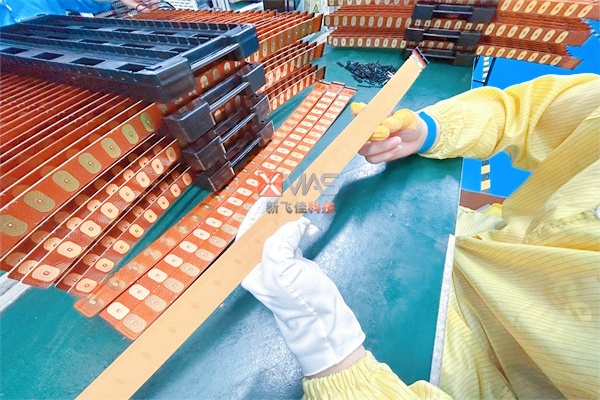FPC flexible circuit board, also known as flexible board, is a printed circuit board with flexibility made from polyimide or polyester film as substrate. It is made by covering one or more layers of conductive graphics on the substrate and through the process of pressing, punching and cutting. It has excellent flexibility, bending resistance, high and low temperature resistance and other properties, and is commonly used in electronic equipment. It can also be flexibly arranged lines in a small space, but also effectively reduce the weight and volume of the equipment and improve the overall performance of the product. However, in the FPC flexible circuit board processing and use of the process, the circuit board voltage withstand can also be an important consideration.
First, the circuit board voltage withstand capacity of the influencing factors
Circuit board voltage withstand capacity is affected by a variety of factors, including the following aspects:
1. Materials: FPC substrates usually use polyimide or polyester film, the insulation properties of these materials directly affect the circuit board's voltage withstand capability. High-quality materials have higher insulation resistance and voltage strength, and can withstand higher voltages.
2. Thickness: The thickness of the FPC is also an important factor affecting its ability to withstand voltage. Generally speaking, thicker FPC has better insulation properties and mechanical strength, and can withstand higher voltages.
3. Components: circuit board components such as capacitors, resistors, IC chips, etc., their voltage withstand ability will also affect the voltage withstand ability of the entire circuit board.
Circuit design: the rationality of circuit design, wiring density, line width and other factors will also have an impact on the circuit board's voltage withstand capability.
Second, the FPC flexible circuit board voltage range
FPC flexible circuit board voltage range refers to the maximum voltage value it can withstand under normal operating conditions. Generally speaking, the FPC voltage range between 30V-1000V, the specific value depends on the substrate used, thickness, line width and other factors. In practice, the need to select the appropriate FPC material and thickness according to the specific product requirements and working environment to ensure that the circuit board voltage withstand capacity to meet the requirements.
Third, to improve the FPC flexible circuit board voltage withstand capacity of the method
In order to improve the voltage withstand capacity of FPC flexible circuit boards, you can take the following methods:
1. Select high-quality materials: choose a good insulating properties of the substrate and conductive materials, you can improve the voltage withstand capacity of the FPC.
2. Optimize circuit design: By optimizing the circuit design and rationally laying out the lines and components, the resistance and inductance of the lines can be reduced to improve the overall performance of the board.
3. Increase the thickness of FPC: increase the thickness of FPC appropriately within the allowable range, which can improve its insulating properties and mechanical strength, and thus improve its voltage withstand capability.
4. Strict control of the production process: in the production process, strict control of process parameters and quality standards to ensure that the quality and performance of FPC is stable and reliable.
Fourth, the summary
FPC flexible circuit board as a high-performance circuit board materials, in modern electronic equipment plays an increasingly important role. Understanding the voltage tolerance of FPC and its influencing factors is of great significance for selecting suitable FPC materials and thickness, optimizing circuit design, and improving product quality and performance. By taking appropriate measures and methods, the voltage withstand capability of FPC flexible circuit boards can be further improved to meet various complex circuit environments and application requirements.


